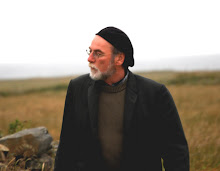Part Prague 1968, Part Chicago 1932

The City of Khabarovsk is a decaying but strangely genteel place. Among its tree-lined boulevards are huge tracts of ramshackle apartment blocks and loghouse-style frontier buildings with exotic onion-domed roofs, all jumbled together on a series of hills overlooking a broad reach of the Amur River.
The city is the capital of the sprawling territory of Khabarovsk Krai, and home to about 750,000 people. It’s closer to Vancouver than it is to Moscow, and it lies on almost exactly the same latitude, so its climate is more forgiving than that of most Russian cities. They say Khabarovsk is at its best in the early spring, during the week that begins with the old Soviet high holy day of May Day and ends with Victory Day, which commemorates the Great Patriotic War, as Russians call the Second World War. Most people try to take the week off, and they trundle back and forth from their dachas and vegetable plots out in the countryside, and the schools and universities are mostly closed. There are concerts and marches are parades, and there’s a good deal of vodka-drinking involved.
As it happened, we’d arrived in Khabarovsk that very week, and although it’s a city of dreary Stalin-era office complexes, monuments to Bolshevik martyrs, and dirt-road ghettos where the Gypsies live, there are also grand old Orthodox cathedrals, sprawling parks, museums and galleries. A statue of V.I. Lenin still gazed out over Lenin Square, and City Hall was still on Karl Marx Street, but there was a liveliness about the place. It was partly because of the city’s multi-ethnic hodgepodge, and partly because there were still 19 functioning colleges, institutes and universities within a short, rickety tram ride from downtown. It was a bit of Prague in the 1960s, and Chicago in the 1930s. There were sidewalk cafés everywhere, where college students engaged in animated conversations, but there were also hordes of grim-faced young men in crew cuts and black leather jackets, loitering on streetcorners or climbing in and out of flashy black limousines with smoked-glass windows.
The downtown streets were alive with buskers playing accordions and violins. Hawkers were plying their trade at vegetable stalls and impromptu kiosks, selling milk and soft drinks and chocolate bars, and the magpies were building their nests in the trees. Children were playing in the parks, and lining up in disorderly queues for reindeer rides and pony rides, and one morning in the Central Hotel, a crackerbox palace of crumbling plaster and broken elevators overlooking Lenin Square, I was awakened at dawn by a deafening noise outside my window. It turned out to be the sound of dozens of Russian tanks, troop carriers, and mobile missile launchers streaming through the city’s streets.





0 Comments:
Post a Comment
<< Home